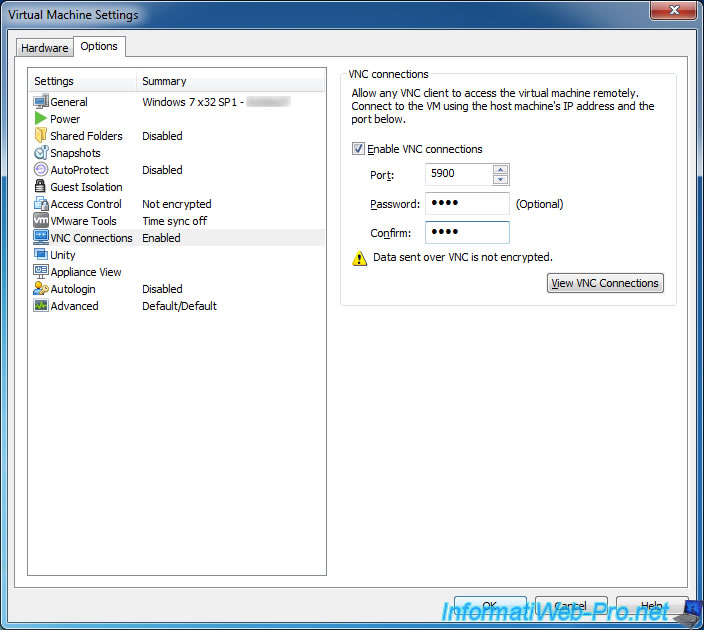
The VM must be connected to via the console because the USB HASP required to run the software will not allow it to run via remote desktop. TcpSocket: Connecting to 192.168.128.128 port 5900ĬConn: connected to host 192.168.128.128 port 5900ĬConnection: Using RFB protocol version 3.Here's an example of what I did to allow VNC connections to a VM running on our ESXi 5.1 host. TcpSocket: Connecting to 192.168.128.130 port 5900ĬConn: connected to host 192.168.128.130 port 5900ĬConnection: Server supports RFB protocol version 3.8ĬConnection: Using RFB protocol version 3.8ĬConnection: processing security types messageĬConnection: Server offers security type None(1)ĬConnection: Choosing security type None(1)ĬConnection: processing security result messageĬConnection: reading server initialisationĬConn: Using pixel format depth 24 (32bpp) little-endian rgb888 So, adding support for more schemes shouldn't require any more work than just the authentication.Ĭopyright (C) 1999-2018 TigerVNC Team and many others (see README.rst)ĭecodeManager: Creating 4 decoder thread(s) Looking at go-vnc's source, it looks like there aren't many authentication schemes supported but fortunately wrote it so that it's easily pluggable.

I'd expect vncviewer to output what's supported and emit what it succeeded with. The VNC protocol's handshake includes the exchange of the available authentication mechanisms, so this way the client can choose what it supports. Valid values are a comma separated list of None, VncAuth, Plain, TLSNone, TLSVnc, TLSPlain, X509None, X509Vnc and X509Plain.Īnother way (which I think depends on your vnc client) is that with vncviewer you can specify -Log *:stderr:100 to output everyting to stderr, or -Log *:file:100 -LogFile /path/to/file.log to output to a log file ( ). Specify which security scheme to use for incoming connections. => Builds finished but no artifacts were created. => RHEL6: Error handshaking with VNC: no suitable auth schemes found. RHEL6: view the screen of the VM, connect via VNC with the password "OcyuQOnV" to RHEL6: The VM will be run headless, without a GUI. => RHEL6: Starting HTTP server on port 8939 => RHEL6: Creating required virtual machine disks

=> RHEL6: Uploading ISO to remote machine. RHEL6: Downloading or copying: file:///Users/adarobin/Code/rhel-base-image/isos/rhel-server-6.10-x86_64-dvd.iso


 0 kommentar(er)
0 kommentar(er)
